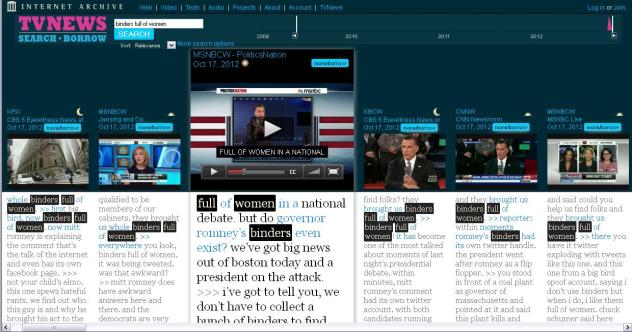Subtitles for VOD, whose responsibility is it anyway?
UK based charities behind the #SubtitleIt campaign received a letter from Ed Vaizey, Minister of State for Culture and the Digital Economy. It was not the response that the campaign had hoped for.
Action on Hearing Loss have summarised:
Mr Vaizey has told us that, during autumn 2015, Department for Culture, Media and Sport officials met with platform operators, content providers and broadcasters, and that the discussions gave clarity into the problems limiting the availability of access services and what’s needed to improve provision levels.
The Minister has concluded that a lot has been achieved by broadcasters, content providers and platform operators towards increasing the provision of subtitles, and that “the 2013 commitment is being met”. He states that the introduction of legislation and the prescription of targets “could have a detrimental impact on what the sector has shown it is able to achieve on a voluntary basis”. In short, he has refused to take decisive action to end the digital exclusion faced by people with hearing loss due to the lack of subtitles.
SOURCE: Action on Hearing Loss – Government decision on subtitles, April 2016
And the crux of the issue:
Mr Vaizey states that it was “encouraging to hear that several players throughout the supply chain of access services are working together” to overcome problems that limit the availability of access services.
In reaching this opinion Ed Vaizey has ignored the evidence of the regulator, ATVOD. They reported that a “stalemate” persists between the broadcasters (content providers) who provide the programmes (e.g. ITV and UKTV) and the set top box operators (platforms) who pull together content from lots of different providers (e.g. Sky and Virgin), and a lack of clarity about whose responsibility it is to make content accessible.
SOURCE: Action on Hearing Loss – Government decision on subtitles, April 2016
This issue keeps cropping up. Whose responsibility is it?
Netflix who do subtitle the majority of its content have published an article on their subtitling workflow. It’s interesting to read how Netflix tackles the problem of different devices requiring different formats, and how different languages can sometimes require different rendering capabilities that may not always be available on the device being used by the end user, and how before all of that is tackled, quality control checks are put in place. They have chosen to take on much of the responsibility in the sense that if a content provider does not provide a subtitle file in the correct format, they have invested in systems to overcome the problem and solve the problem of different devices requiring subtitles in different formats (phones, tablets, smart TVs, PC etc) The industry has made similar steps in this regard to with agreeing industry standard subtitling formats (such as EBU-TT which the UK regulator recommends is adopted). BBC iPlayer have also subtitled content as the “norm” for years and have very detailed guidelines documented here. I haven’t found many other articles on this subject, but it would appear the iTunes platform in the US have taken responsibility – sort of. It’s not that the platform is saying it will take responsibility to provide closed captioning, but iTunes (US) will remove content supplied by providers if they have failed to include a closed captioning file. It’s an interesting tactic, but its a move that I feel reflects regulatory requirements in the US, rather than a bold statement from Apple that they will only accept accessible content. (If anyone disagree’s with this conclusion – please do comment).
So, back to the question, whose responsibility is it, and what is the right way to ensure accessibility via subtitling and captioning is implemented for VOD services? It’s a question the FCC in the US asked, and also recently answered. The UK VOD industry currently does not have this clarity, and the regulator cannot set it. In the interest of full transparency I should point out to those who are reading who may not be aware, I’ve been employed by a broadcaster, and a platform in my career so far. Whilst I have some insight into the differing workflows – it doesn’t make the answer to the question any easier except to say if both work together (that is a platform makes sure it has no barriers to access and can support accessibility features, and a broadcaster can provide those features (e.g. provide subtitle files / audio description files with its video content), it can be solved. I don’t necessarily think its and either/or answer here. The responsibility probably lies with both. Yes, there are challenges which some broadcasters will face more than others, and there are some platforms that will find it easier to do than others (for various reasons: do they make their own programmes, do they buy them from other content providers, do they control the full end-to-end chain? Has the platform been built to support accessibility features or do they have to tackle that first? etc) But it is absolutely technically possible for any VOD service to provide an accessible service. We know that, there are good guys who have been doing this for ages. The question is, how time-critical is this goal considered to be by either one of these parties? If it even is a goal for those services which are not accessible? Why not set a (regulatory) target – no goal is ever reached without setting a deadline. And whatever well-meaning action is currently being taken by VOD services that are planning to add accessibility features, if you need them, the progress certainly does not feel fast enough. And that is why Action on Hearing Loss are continuing their #SubtitleIt campaign, encouraging anyone who relies on subtitles to enjoy VOD services to contact their TV providers. The charity will also be targeting those working in the VOD industry by giving a talk at the VOD Summit taking place in London next month.






Facing similar problems x 10 here
LikeLike